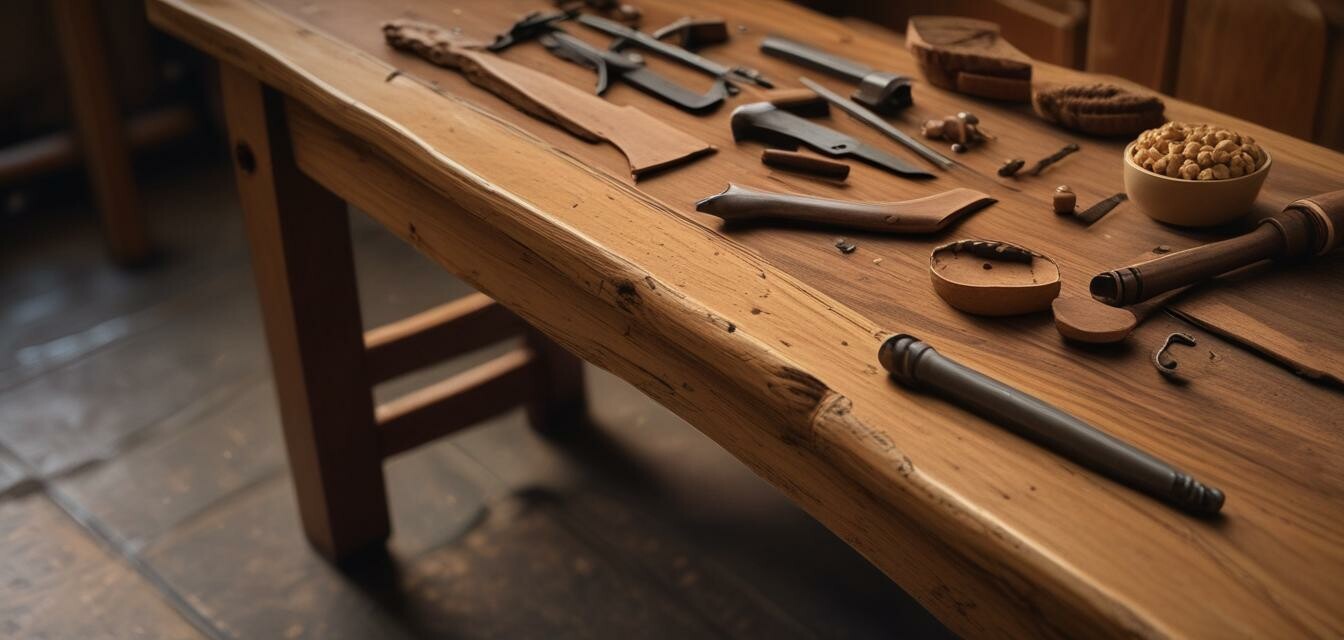
Reviving Old Wooden Furniture: Sustainable Restoration Techniques
Key Takeaways
- Choose eco-friendly materials and finishes for restoration.
- Understand different wooden types and their unique characteristics.
- Use traditional techniques paired with modern tools for the best results.
- Regular maintenance can prolong the lifespan of restored furniture.
Restoring old wooden furniture not only gives a new lease of life to treasured items but also contributes to sustainable practices in woodworking. In this guide, we will explore various techniques and tips to ensure that your restoration process is both beautiful and eco-friendly. Whether you're tackling an heirloom piece or a thrift store find, these tips will help you restore wooden furniture while embracing sustainability.
Why Restore Old Wooden Furniture?
Old wooden furniture often carries a history and character that new pieces simply cannot replicate. Restoring these items not only preserves their beauty but also extends their lifespan, reducing the demand for new materials. By choosing to restore instead of replace, you can:
- Reduce waste: Keeping furniture out of landfills is a key aspect of sustainability.
- Save money: Restoring finds can be much more economical than purchasing new.
- Support craftsmanship: Revamping these pieces often celebrates handmade quality and aesthetics.
Sustainable Restoration Techniques
1. Assess Your Furniture
Before picking up any tools, it’s important to assess the condition of the furniture. Check for:
- Structural integrity (loose joints or broken parts)
- Surface damage (scratches, stains, peeling finish)
- Type of wood (hardwoods tend to be more durable)
2. Eco-Friendly Cleaning Products
Start your restoration by thoroughly cleaning the surface using homemade or eco-friendly cleaners. This will ensure you are not introducing harmful chemicals into your home or the environment. Some options include:
- Vinegar and water: Effective for cutting through grime.
- Baking soda: Great for scrubbing tough stains.
- Essential oils: Add a pleasant scent while combating bacteria.
3. Repairing Damage
Based on your initial assessment, here are some common repairs you might need to tackle:
| Damage Type | Recommended Fix | Materials Needed |
|---|---|---|
| Loose joints | Wood glue and clamps | Wood glue, clamps, sanding paper |
| Scratch marks | Touch-up markers or a walnut | Furniture marker, walnut |
| Dents | Steam and cloth method | Steam source, cloth |
4. Refinishing and Staining
Instead of using synthetic finishes, opt for natural oils and waxes to protect your furniture:
- Tung oil: Provides a durable and water-resistant finish.
- Beeswax: Great for a soft sheen and protecting surfaces.
- Natural stains: Made from plants or food sources for eco-friendly options.
5. Sustainable Hardware Choices
When restoring furniture, you may need to replace hardware components. Consider using:
- Reclaimed hardware from vintage stores
- Brass or bronze fittings that are durable and aesthetically pleasing
- Eco-friendly finishes for new hardware to avoid toxic substances
Maintaining Restored Furniture
Once your furniture is restored, regular maintenance is crucial. Here are some tips:
- Keep away from direct sunlight to prevent fading.
- Dust regularly to maintain cleanliness and shine.
- Reapply natural oils and wax every 6-12 months to keep the wood nourished.
Conclusion
Reviving old wooden furniture combines creativity with sustainable practices, ensuring that these beautiful pieces can continue to tell their stories for years to come. By using eco-friendly methods and materials during the restoration process, you contribute to reducing waste and preserving the planet. If you’re interested in more ways to care for your wooden items or explore sustainable options, check out our Sustainable Practices blog for further insights.
Pros
- Preserves history and craftsmanship of vintage pieces.
- Enhances sustainability by reducing waste.
- Offers personalized, unique home decor options.
Cons
- Can be time-consuming depending on the furniture's condition.
- Requires a certain skill level and knowledge of materials.
- Initial costs for tools and materials may be high.